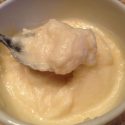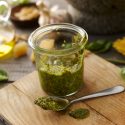All about canning
Many of our grandmothers canned garden crops to preserve them for the winter, but most of us didn’t grow up eating home-canned vegetables. The practice fell out of favor with the advent of large agribusiness and mass production of affordable canned goods. Recently, grassroots movements have been bringing home canning, and other methods of food preservation, back into the spotlight. If you want to join in but aren’t sure where to start, read on as we take a closer look at home canning!
What will I need to get started?
First, you will need some canning jars. Make sure you buy only jars that are designed for canning. Two such brands are Mason and Ball, but there are others as well. You will also need self-sealing lids (single-use only), and metal screw rings. You will find these right next to the canning jars at most retailers. It is helpful to purchase a canning kit, which includes a water-bath canner with wire rack, and some useful utensils. If you plan to can low-acid vegetables, you will need a pressure canner.
How do I choose produce for canning?
Look for produce that appears fresh. Avoid it if it’s wilted, or has bruises or spots of decay. It is not necessary to purchase the highest-grade fruits and vegetables for canning, but they should be at the peak of ripeness for best results (never overripe). Wash and inspect all produce well. Peel, chop, and/or slice your produce the way you want your final product to be.
How do I make sure the jars are safe to use?
It is very important to wash empty jars in hot water and detergent, or the dishwasher, before each use — even if the jar was previously washed. Make sure there are no cracks or chips in each jar you plan to use. Jars then need to be sterilized. Do this by placing jars right-side up on the rack in your water-bath canner. Fill the canner and jars with hot (not boiling) water to one inch above the tops of the jars. Boil the water for 10 minutes. Carefully remove and drain the sterilized jars one by one.
How do I fill the jars?
After you sterilize the jars, you are ready to fill them with summer’s bounty! Pack the hot jars with your produce, leaving at least a half-inch of headspace at the top of each jar. Cover with syrup, water, or juice (depending on item) to the half-inch mark. Juicy fruit and tomatoes can be packed in their own juices. Run a rubber spatula gently around the inside of the jar to release any air bubbles that may be trapped. Wipe the rim and screw threads of the jar with a clean, damp cloth. Put a self-sealing lid on each jar, and secure with a metal screw ring (these should also be hot). Now you’re ready for either water-bath canning or pressure canning!
Using a water-bath canner
High-acid produce should be processed in a water bath canner. This includes all fruit, tomatoes, and pickles. The higher acidity in these foods helps stop the growth of harmful bacteria, so pressure canning is not needed for them.
Once jars are packed and lids are on, place on wire rack in canner, so jars are not touching. Cover with hot, but not boiling, water by one or two inches. Heat water to boiling and then reduce heat to a steady, gentle boil. Start processing time, and process as your recipe states. Remove jars with tongs, and cool upright, not touching, on a rack or folded cloth. Don’t be alarmed if you hear them start to “pop.” As the jars cool, the lid will be suctioned onto the jars to form a tight seal. After 12 hours, test the jars for a proper seal by pushing on the center of each lid. The lid should be depressed and should not give. If the seal is incomplete, discard contents. Metal screw bands may be removed at this point. Make sure to label your cans with the name of the item and the date. Use within a year.
Using a pressure canner
Low-acid foods must be processed at a heat of 240° F to destroy heat-resistant botulism-producing bacteria. (Botulism is a very serious, potentially deadly illness caused by Clostridium botulinum bacteria, which occurs naturally in soil.) The high temperature can only be reached with steam under 10 pounds of pressure in a pressure canner. Low-acid foods include meat, poultry, fish, and all vegetables except tomatoes.
Make sure to follow the instructions from the manufacturer of the pressure canner if they differ from these guidelines. Once jars are packed and lids are on, pour two or three inches of water into the pressure canner and stand jars on the rack so they are not touching each other or the sides of the canner. Fasten the lid onto the canner. Heat the canner until a steady stream of steam flows from the vent. When the steam becomes invisible, close the pressure regulator. Raise the pressure rapidly to two pounds less than is required, reduce heat, and allow the pressure to rise the last two pounds slowly. Hold the pressure steady. When the processing time is up, remove the canner from the heat, and allow the pressure to return to zero. Wait one or two minutes, then slowly remove or open the pressure regulator. Unfasten the cover and tilt the far side up so any steam escapes away from you. Cool jars upright, not touching, on a rack or folded cloth.
Additional resources on home food preservation
You will find a section on canning in the back of most comprehensive cookbooks. This is a great place to start; you will find a lot of information including recipes for basic sugar syrups and processing times, in addition to more specific recipes. These are also some great resources:
National Center for Home Food Preservation



